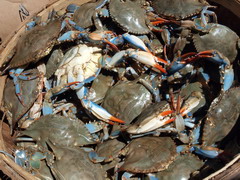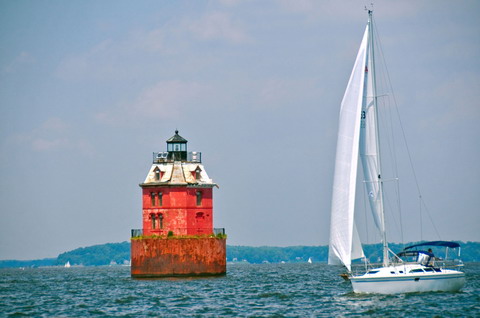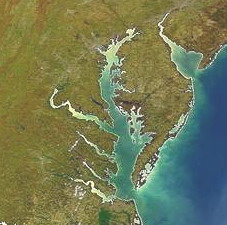Commentary: Strong-arm tactics don’t foster cooperation on Bay cleanup
Bay Journal News Service
At a recent supper party in the foothills of West Virginia’s Eastern Panhandle, a fisherman had just returned from Kent Narrows with a bushel of Maryland Blue Crabs.
The crabs, rest their souls, made wonderful emissaries.
The light conversation that punctuated the picking would have fit right in around tables in Salisbury or Solomons Island: The size of the crabs, their habits, their tastes in bait and, more generally, the overall health of the Chesapeake Bay.
Sympathy for the bay far from its waters
A hundred or more miles from its sparkling, reedy inlets, the Bay is still very much in the psyche of people throughout its watershed. Many groups in the Appalachian foothills enthusiastically plant trees along local waterways—doing what they can to stem harmful runoff. To be sure, it is not the matter of livelihood that it is to the east, but most everyone who can pick a crab is aware of, and sympathetic toward, the Bay’s issues.
Obviously, the Bay needs as large a constituency as it can muster in the six watershed states, because a cranky state electorate can drag down the most well-intentioned of issues—even those with the full might and muscle of the federal government behind them.
So, with an upstream population that is predisposed to be sympathetic to the bay, the message to state and federal bureaucrats should be: Don’t blow it.
Don’t lay down the law, don’t throw your weight around, don’t come in like a blunderbuss with threats and scare tactics. Don’t protect one person’s interests at the expense of another’s.
Because that’s not going to help those responsible for cleaning up the bay’s headwaters with their cause.
Fumbling bureaucracies
Yet, this summer, state and federal bureaucracies appear to be fumbling away a chance to get what we might call the “red counties” of the blue states on their side.
As most Bay advocates are aware, the EPA is in the process of working with the watershed states and the District of Columbia to restrict the amount of nutrients, phosphorous and sediment in the Chesapeake’s feeder waters. Whimsically known as a “pollution diet,” the EPA has somewhat ominously declared that those jurisdictions that fail to submit adequate plans for reducing pollution will suffer “consequences” that could cost localities future development and grant money.
Two problems: One, to rural politicians and residents of the Piedmont that sounds a lot like a threat. Two, the federal deficit being what it is, they are likely as not to spit on grant money, whether it benefits them or not.
Ridiculous price tags
In Maryland, salt was poured into the wound when bureaucrats cheerfully showed up at public meetings telling local governments that they were theoretically on the hook for millions of dollars worth of pollution-reduction measures by 2025. In Washington County, Md., the tab for Bay cleanup came to $1.1 billion, or better than $7,000 for every man, woman and child.
In the Potomac River town of Hancock, a stunned council was informed that its responsibilities for Bay cleanup totaled $31 million — almost 20 times the town’s entire annual operating budget. The town’s generally progressive mayor called the numbers “astonishingly ridiculous.”
To the west, in Allegany County, the commissioners sent back their nutrient-reduction plan to the state with a polite note stating that they would be happy to implement it when someone showed up to pay for it.
Throughout the region, irritated farmers have packed public hearings, upset that stream buffers are eating up more and more of their tillable acreage. Country folk are nervous that the state will step in and demand costly upgrades to their septic systems, as proposed new regulations make likely. To all of the above, there does not appear to be much give and take.
Impossible expectations destroy best of intentions
From the Blue Ridge of Virginia to the hills of Western Maryland and West Virginia to the rolling farmlands of central Pennsylvania, people care about the Bay. To some degree, many would consider themselves to be stakeholders.
But when local people and governments are hit with what they see as impossible expectations, the best of intentions can shatter on the shoals of practicality. When they are told that, in effect, they will be punished if they don’t learn to sprout wings and fly, those in the Bay’s far reaches who might have been counted upon to help will become apathetic at best or hostile at worst.
Certainly the Bay advocates believe that the occasional workshop or public hearing constitutes “working with” people in the Piedmont. But even if it’s at a public hearing, having the terms dictated to them does not fit with the locals’ idea of a healthy relationship, one that will necessary if we are to have a healthy Chesapeake Bay.
Tim Rowland is a newspaper columnist and author of “Maryland’s Appalachian Highlands: Massacres, Moonshine and Mountaineering.”

MarylandReporter.com is a daily news website produced by journalists committed to making state government as open, transparent, accountable and responsive as possible – in deed, not just in promise. We believe the people who pay for this government are entitled to have their money spent in an efficient and effective way, and that they are entitled to keep as much of their hard-earned dollars as they possibly can.



